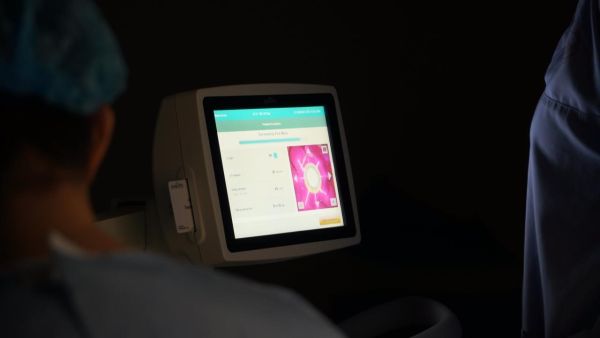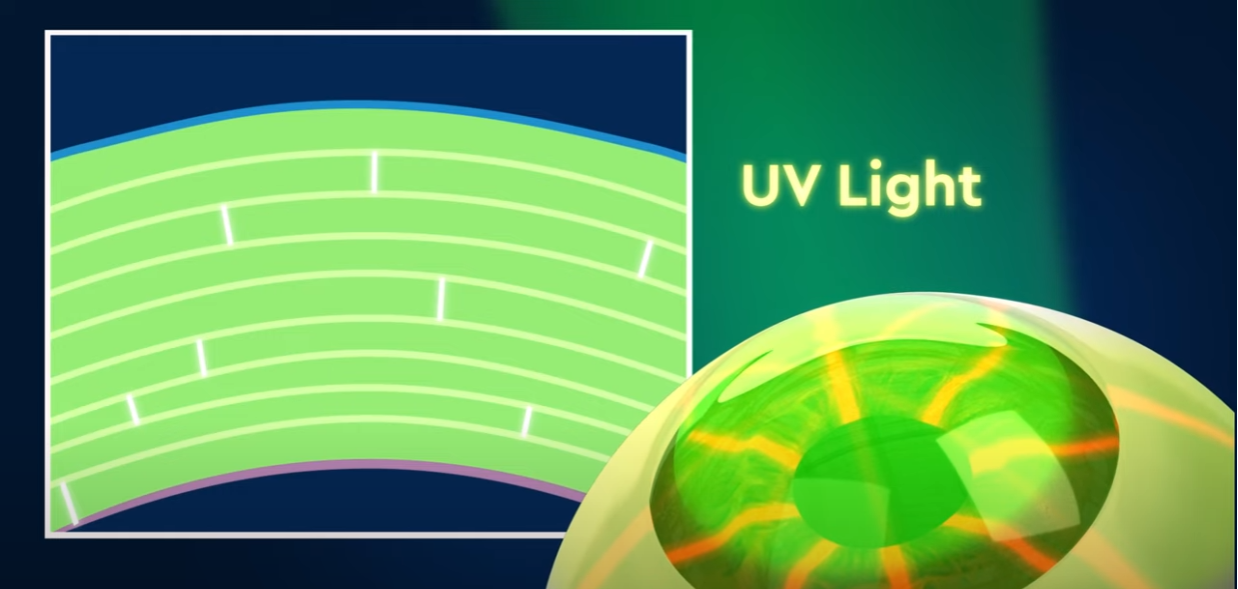ANSWER COMMON QUESTIONS ABOUT CROSSLINKING IN REFRACTIVE SURGERY
Crosslinking is a procedure to strengthen the cornea after laser refractive surgery (ReLEx SMILE, Femtosecond Lasik, SBK Lasik), increasing the stability of visual results after surgery. Learn more about Crosslinking procedure (mechanism, suitable subjects, limitations, postoperative care) through the article below!

Crosslinking's mechanism
Crosslinking is a procedure that creates links between the collagen fibers of the cornea, so that the cornea will be increased in stability, better able to withstand the impact of intraocular pressure after surgery.
To perform Crosslinking, the doctor will impregnate the cornea with Riboflavin (Vitamin B2), wait for 60 - 90 seconds for the drug to penetrate deeply into the parenchyma, then irradiate with ultraviolet UVA rays to activate Riboflavin, creating bridges between corneal collagen fibers, helping the cornea become more durable after surgery.

Subjects suitable for Crosslinking
Refractive surgery (near, far, astigmatism) with laser will remove part of the corneal parenchyma to correct refractive errors. Therefore, after surgery, the cornea will be thinner and its tolerance to mechanical force may be less. Accordingly, some subjects suitable for Crosslinking can be mentioned as follows:
- The patient meets the conditions for laser refractive surgery.
- The cornea is thin and weak, the corneal thickness is less than 500 μm.
- High myopia, remaining corneal thickness after surgery is less than 300 μm.
Limitations of Crosslinking
Crosslinking is a safe procedure, because the mechanism is to impregnated the eyes with Vitamin B and irradiate UVA rays, so it rarely causes negative effects. However, ultraviolet rays for some sensitive eyes can cause discomfort, even a burning sensation after treatment. In this case, patients should increase the use of artificial tears and limit exposure to light. If the eye still hurts, the patient can apply a cold compress and take more painkillers. This symptom will usually go away after 24 hours.
Regarding side effects, although rare, Crosslinking can cause slight blurring of the cornea, obstructing vision, causing the patient to see blurrier and more glare than usual. In this case, the patient will need additional treatment for about 3-6 months. However, according to statistics, there has never been a case of Crosslinking causing complications that seriously affected eye function.

Eye care after Crosslinking
The Crosslinking procedure does not cause damage to the eyes, so the care process does not require special attention. Patients only need to follow the eye care process after refractive surgery.
Dr. Vu Anh Tuan - Professional Director of Japan International Eye Hospital answers questions about Crosslinking procedure
